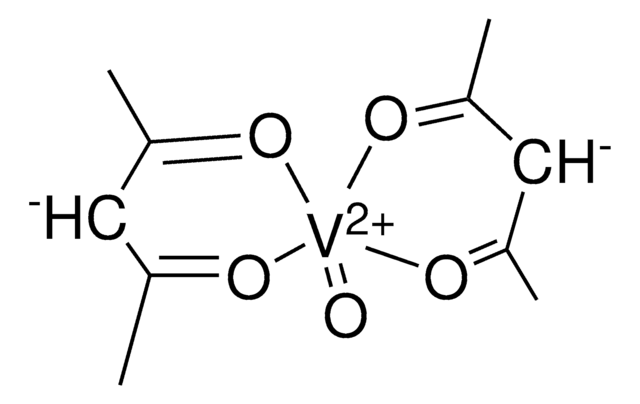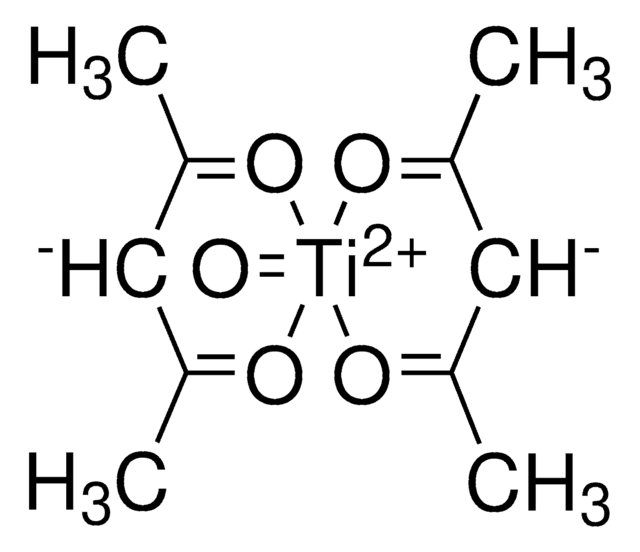338001
Zirkonium(IV)acetylacetonat
97%
Synonym(e):
2,4-Pentandion Zirkonium(IV)-Derivat, Tetrakis-(2,4-pentandionato)-zirkon(IV), Zirkonium(IV)-2,4-pentandionat
About This Item
Empfohlene Produkte
Assay
97%
Form
powder
Eignung der Reaktion
core: zirconium
reagent type: catalyst
SMILES String
CC(=O)\C=C(\C)O[Zr](O\C(C)=C/C(C)=O)(O\C(C)=C/C(C)=O)O\C(C)=C/C(C)=O
InChI
1S/4C5H8O2.Zr/c4*1-4(6)3-5(2)7;/h4*3,6H,1-2H3;/q;;;;+4/p-4/b4*4-3-;
InChIKey
FPFOSIXCIBGKOH-MTOQALJVSA-J
Suchen Sie nach ähnlichen Produkten? Aufrufen Leitfaden zum Produktvergleich
Allgemeine Beschreibung
Anwendung
- As a sol-gel precursor to synthesize zirconia nanoparticles with photocatalytic activity.
- As an additive to improve the performance of the electron transport layer in perovskite solar cells.
- To synthesize as-prepared zirconium acetylacetonate (a-ZrAcac) film as a cathode buffer layer in polymer solar cells. It exhibited an average power conversion efficiency (PCE) of 8.75% which is significantly improved than that of the devices with traditional Ca/Al cathode.
- To synthesize high-κ zirconium oxide gate dielectric for Organic Field-Effect Transistors at low voltage operation.
- To fabricate the conductive interlayers for quantum dot light-emitting devices(QLEDs), which enhances quantum efficiency, power efficiency, and longer operational lifetimes.
- As a ring-opening initiator to synthesize biodegradable polyacids.
- As a catalyst to synthesize polylactide terpolymers.
Signalwort
Danger
H-Sätze
Gefahreneinstufungen
Acute Tox. 4 Oral - Flam. Sol. 1
Lagerklassenschlüssel
4.1B - Flammable solid hazardous materials
WGK
WGK 3
Flammpunkt (°F)
Not applicable
Flammpunkt (°C)
Not applicable
Persönliche Schutzausrüstung
dust mask type N95 (US), Eyeshields, Gloves
Analysenzertifikate (COA)
Suchen Sie nach Analysenzertifikate (COA), indem Sie die Lot-/Chargennummer des Produkts eingeben. Lot- und Chargennummern sind auf dem Produktetikett hinter den Wörtern ‘Lot’ oder ‘Batch’ (Lot oder Charge) zu finden.
Besitzen Sie dieses Produkt bereits?
In der Dokumentenbibliothek finden Sie die Dokumentation zu den Produkten, die Sie kürzlich erworben haben.
Kunden haben sich ebenfalls angesehen
Unser Team von Wissenschaftlern verfügt über Erfahrung in allen Forschungsbereichen einschließlich Life Science, Materialwissenschaften, chemischer Synthese, Chromatographie, Analytik und vielen mehr..
Setzen Sie sich mit dem technischen Dienst in Verbindung.















